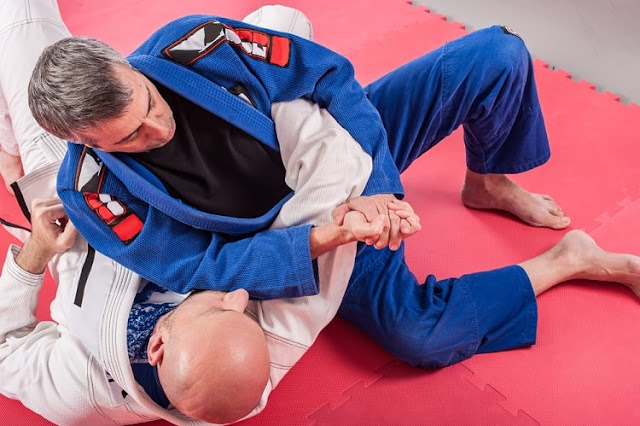The most frequently asked question by Gracie NEPA BJJ novices is, "Where can I start?" Brazilian Jiujitsu can seem like a massive meal if the beginner attempts to take it all in. There are thousands upon thousands of submissions. Sweeps, counters. Escapes. Passes. It is almost like eating a whole meal. Eating small portions of your training would be best until you have tried all the techniques.
Also, where should the beginner start? It is important to understand which techniques and strategies you should focus on for your ability to improve quickly without becoming overwhelmed. Although there is much contradictory and confusing advice available, the common thread that all masters offer in BJJ is to keep it simple at first.
This is my perspective on the best techniques for beginner students of BJJ. The FIVE techniques I selected are easy in execution, high percentage, and will build good habits, which will be a foundation for the more advanced techniques you will learn later in BJJ. These techniques aren't all that you should be studying, but they will make it easier to avoid the frustration and confusion new students experience when learning these techniques.
Starter Technique 1; Guard Replacement with the Hip Escape
Why? This side control escape will be more beneficial than any other from your first roll up to your black belt. All escapes require you to be able to move your hips on both the bottom and top. It teaches you two important hip movements that will allow you to escape from BJJ's bottom:
Bridging and Hip escape.
After your opponent has passed your GuardGuard, you must replace the GuardGuard. Also, if you can master this side control escape technique, you'll learn much about guard retention in BJJ.
Standard error: Bench pressing your opponent to the ground instead of using "frames" with your arms.
Intermediate Technique 2 ('Simple Choke' from Guard
Why? It would be best to use the cross-collar grip to start your sweeps and attacks against the GuardGuard. The base of your closed guard strategy is the basic cross collar, sleeve, and collar grip. It allows you to control the opponent's head and break down their posture. It also serves as the starting point for many guard attacks, such as the simple choke. Helio Garcia loved the simple choke and once used it to knock out a Japanese challenger, and it was his favourite attack from the GuardGuard.
The standard error is not getting the first hand into the collar deep enough. Make sure you reach DEEP in the collar to grab the tag at the opponent's back.
Beginner Technique 3.
"Upa" / Bridge and Roll Escape. Vs Mount Why. For almost every escape on the earth, powerful hip bridges are essential. Knowing how to use your hip power to overcome the mount is essential. BJJ is all about using your most vital muscle groups efficiently.
Your quads, hips, hamstrings, and glutes are activated for the Upa exit. Refrain from trying to lift your head out of the mount. A skilled opponent can give you an automatic armbar if you do so. The Spa offers a beginner student a high-percentage escape to the bottom, without the risk of having your back "taken" or your arm taken by your opponent.
Common Sin: Forgetting the opponent's arms when bridging. They can then post the arm against you and remain at the top.
Starter Technique 4 - Elbow to Knee Escape Vs Mount
Why? Combine the elbow to the knee escape with the up, and you'll have a solid strategy to make it easier to escape the mount. This strategy is also a bonus because it can be used with beginner technique 1. You'll become more efficient and successful in creating space.
Standard error Not shrimping hips enough to leave enough space between your knees and the opponent's hips. Because shrimping is essential to being able to perform it at will, we start warmups by doing it.
Beginner Technique 5: Rear Naked Choke
Why? This submission is the greatest of all BJJ submissions. Rear Naked Choke - This is the best submission from behind. RNC, also known as "mata Leon / Lion killer", is statistically considered the most successful submission in UFC History. It's also the most efficient and effective technique to force an opponent to be larger, stronger, or more dangerous in the gym.
Common Error. Try to choke over your opponent's face. It would be best if you slid your forearm UNDER that opponent's jaw until the V' of the elbow is aligned with the opponent's chin.
It's here - my top BJJ methods for beginners! Additionally to these techniques, I would recommend that beginners learn the hierarchy' and The guidelines of Brazilian Jiu Jitsu technique. The 'big picture' is only possible if you connect the pieces. Have fun and take your time.

Comments
Post a Comment